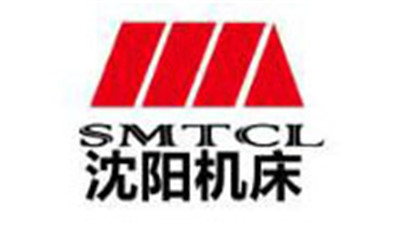Unlocking the Secrets of Control Transformers: Essential Insights for Engineers and Hobbyists
Table of Contents
- Understanding the Working Principle of Control Transformers
- Key Applications of Control Transformers in Engineering Projects
- Essential Safety Considerations When Working with Control Transformers
- Common Mistakes and Misconceptions About Control Transformers
- Best Practices for Selecting the Right Control Transformer for Your Needs
- Advancements in Control Transformer Technology: What You Need to Know
- Transforming Precision: The Essential Role of Machine Tool Control Transformers in Modern Manufacturing
- FAQS
- Conclusion
- Related Posts
In today’s ever-changing world of electrical engineering, Control Transformers are more important than ever when it comes to keeping power systems stable and running smoothly. According to recent market reports, the demand for these transformers is expected to skyrocket soon. That’s mostly because of the growing need for better energy management and the push towards renewable resources. Dezhou Xinping Electronics Co., Ltd., a national high-tech company founded back in March 2001, is right there in the thick of it, focusing on making precision electronic transformers, including Control Transformers. We’re really passionate about innovation and quality, and our approach lines up nicely with industry standards that focus on cutting-edge tech and sustainability. Knowing the ins and outs of Control Transformers isn’t just useful for engineers — it’s also pretty helpful for hobbyists or anyone looking to make their electrical systems more efficient. These little devices definitely play a key role in modern engineering, and understanding them can really make a difference in how we approach power systems today.

Understanding the Working Principle of Control Transformers
Control transformers might not be the most glamorous parts of your electronic setup, but trust me, they’re pretty important. They’re the unsung heroes that supply the right voltage to keep your devices running smoothly, all while making sure everything stays safe and efficient. When you get the hang of how they work, it’s really about understanding how they control voltage levels and keep different circuits isolated from each other. Usually, these transformers take a high voltage and flip it down to a more manageable level—perfect for engineers or hobbyists wanting to safely plug things into their projects. The basics are pretty straightforward: you’ve got a primary winding and a secondary winding, and the magnetic field generated by the primary basically induces a voltage in the secondary, doing all the magic behind the scenes.
Here at Dezhou Xinping Electronics Co., Ltd., which is a top-tier high-tech company, we focus on making precise electronic transformers used in all sorts of applications. We’re big on innovation, keeping up with the latest tech trends like neural networks. Nowadays, transformers aren’t just for power supplies—they’re playing roles in everything from robots to big machine learning systems. So, if you really get what control transformers do and stay up-to-date with modern tech, you can boost your projects majorly and make the most of these key components in our increasingly electrified world.

Key Applications of Control Transformers in Engineering Projects
Control transformers are really crucial in a bunch of engineering projects these days, especially with how our power grids are evolving. You know, with more renewable energy sources coming into play and electric vehicles becoming pretty common, we really need smarter, more efficient ways to handle all that power. These transformers are key—they step down high voltages to safer, more manageable levels so engineers can keep everything running safely. Plus, their ability to isolate and regulate power makes a huge difference when it comes to controlling how electricity is distributed and keeping the whole system reliable.
At Dezhou Xinping Electronics Co., Ltd., they're all about tackling these new challenges head-on. As the energy scene changes, their cutting-edge solutions help both engineers and hobbyists stay ahead of the curve. Whether it’s in substations or control setups for renewable energy projects, control transformers aren’t just about safety—they're also about pushing performance further in all sorts of innovative engineering applications.
Essential Safety Considerations When Working with Control Transformers
When you're working with control transformers, safety really has to come first—for both pros and hobbyists alike. These parts are super important because they help manage voltage levels, but if you don’t handle them carefully, things can get pretty dangerous. Make sure your workspace is dry and free from any hazards before you start messing around. And don’t forget to wear protective gear—things like insulated gloves and safety goggles make a huge difference when dealing with electricity.
Here’s a good tip: before you hook up a control transformer, take a moment to double-check all your wiring against the schematic. It might seem tedious, but it helps avoid the wrong connections which could cause problems down the road. Also, get familiar with the specs—know your voltage ratings and load requirements. It might sound boring, but knowing this stuff makes installing easier and helps prevent shocks or damaging your gear.
And a quick heads-up: always disconnect the power before you do any maintenance or inspections. It’s really the safest move. Keep the area around the transformer clear of anything flammable, and if you can, set up a lockout/tagout procedure—it's a simple way to make sure nobody accidentally energizes the system while you're working on it. Lastly, keep an eye on the transformer regularly for any signs of overheating or wear. Catching these issues early can save you from bigger problems later and helps your equipment last longer.
Unlocking the Secrets of Control Transformers: Essential Insights for Engineers and Hobbyists
| Parameter | Value | Notes |
|---|---|---|
| Voltage Rating | 120V/240V | Standard voltage levels for control transformers. |
| Power Rating | 50VA - 2000VA | Common power ratings for various applications. |
| Frequency | 50Hz / 60Hz | Typical frequency for industrial applications. |
| Mounting Type | Panel Mount / Floor Mount | Different mounting options available. |
| Insulation Class | Class A / Class B | Defines the temperature limits for safe operation. |
| Safety Ratings | UL Listed / CE Certified | Compliance with safety standards. |
Common Mistakes and Misconceptions About Control Transformers
When you're dealing with control transformers, it's pretty common for both engineers and hobbyists to fall into some familiar traps or misconceptions, which can really mess with their projects’ efficiency. A lot of folks tend to assume that all transformers are basically the same—that’s a pretty big oversimplification. As the folks at NEMA point out, control transformers are specifically made for control circuits, so they need to match the right voltage and current specs. Using a transformer that's either too big or too small can cause equipment failures or pose safety hazards—nobody wants that!
And here's another thing I’ve noticed: Some people think that the efficiency of a control transformer isn’t all that important. But actually, a report from the Department of Energy shows that badly chosen or poorly designed transformers waste a ton of energy, which adds up to higher costs over time. Many tend to overlook the fact that high-efficiency transformers—sometimes over 98% efficient—can really make a difference, especially in the long run. By clearing up these misconceptions and being more thoughtful when picking out transformers, both engineers and hobbyists can improve their projects, make things run more smoothly, and contribute to a more sustainable approach overall.
Common Misconceptions About Control Transformers
Best Practices for Selecting the Right Control Transformer for Your Needs
Picking the right control transformer isn't just about ticking boxes—it's about understanding what really works. Whether you're an engineer or just a hobbyist tinkering in your garage, it’s super important to follow some best practices to make sure everything runs smoothly and reliably. Did you know? Studies show that around 30% of transformer failures happen because of poor selection or maintenance. That’s a pretty big deal! So, things like load needs, voltage ratings, and even the environmental factors around where the transformer will sit—those all matter big time if you want your equipment to last. When you take a personalized approach, focusing on what's specifically needed, you can actually extend your transformer's lifespan, cut down on downtime, and save on repair costs. Pretty sweet, right?

And here’s the thing—staying on top of maintenance is a total game changer. Utilities that stick to good O&M (Operations and Maintenance) practices have been shown to boost transformer reliability by up to 20%. Regular check-ups and quick upgrades that respond to how your system is changing go a long way in preventing failures. Recent reports even highlight how important it is to have adaptive protection systems—especially now, with our ever-evolving power grids. So, by keeping these tips in mind, you can make sure your transformer isn’t just meeting today's needs but is also ready to handle whatever comes next.
Advancements in Control Transformer Technology: What You Need to Know
You know, over the past few years, control transformer tech has come a long way. They've gotten so much more efficient and capable, really keeping up with what modern industry needs. According to the latest Global Control Transformers Market Report, this industry is expected to grow pretty steadily — around 5.2% annually from 2022 to 2028 — mainly because there's more automation happening in manufacturing. These transformers are crucial because they help regulate voltage reliably and provide isolation, which is super important for protecting delicate electrical gear in different settings.
Lately, there have been some cool innovations, like smart technology being built right in. This means real-time monitoring and diagnostics are now possible, which is a game-changer for maintenance — no more surprises or unexpected downtimes. Plus, improvements in materials, such as stronger magnetic cores and better insulation, mean these transformers can handle tough conditions and last longer. Whether you're an engineer or just someone tinkering at home, staying up-to-date with these advances is key to keeping your systems running smoothly and lasting longer — it’s all about working smarter, not harder.
Transforming Precision: The Essential Role of Machine Tool Control Transformers in Modern Manufacturing
In modern manufacturing, the significance of machine tool control transformers cannot be overstated. These transformers play a critical role in ensuring operational efficiency and enhancing the precision of manufacturing processes. With the increasing demand for high-quality products, manufacturers are investing in advanced transformer technologies that comply with standards such as JB/T5555-2013. This standard ensures that transformers operate reliably within specified performance parameters while minimizing energy loss.
The JBK Control Transformer is designed to operate under various input voltage scenarios, including AC 380V, 427V, and 480V at 50Hz. Remarkably, its no-load current is less than 12% of the rated current, which reflects a significant advancement in energy efficiency. According to a report from the International Energy Agency, optimizing such transformers can reduce energy consumption in manufacturing plants by up to 30%. This reduction is crucial in an era where energy costs are a major concern for manufacturers striving to maintain competitiveness.
Customization of transformers according to specific customer needs is another key differentiator in this field. By adapting to unique parameters, manufacturers can ensure that their equipment meets the precise demands of their production environment. As reported by the Manufacturing Technology Insights magazine, tailor-made solutions in transformer design are becoming increasingly critical as industries evolve and seek to enhance their operational capabilities. Embracing these innovations not only boosts productivity but also contributes to sustainable manufacturing practices by reducing waste and energy usage.
FAQS
: Control transformers primarily step down voltages to manageable levels, ensuring the safe operation of equipment and systems while providing isolation and regulation for power distribution.
Control transformers are essential in renewable energy projects for optimizing performance, ensuring operational safety, and managing power distribution effectively.
The control transformer market is projected to grow due to rising automation in manufacturing processes, with a compound annual growth rate (CAGR) of 5.2% from 2022 to 2028.
Recent advancements include the integration of smart technology for real-time monitoring, improved materials for durability, and enhanced efficiency through better magnetic cores and insulation.
Voltage regulation is crucial for protecting sensitive electrical equipment from damage and ensuring optimal performance in various operational environments.
Smart technologies allow for real-time monitoring and diagnostics, which improve maintenance schedules and reduce operational downtime.
They enhance the reliability of electrical networks by stepping down high voltages and enabling safe power distribution amid increasing demands from renewable energy sources and electric vehicles.
Dezhou Xinping Electronics Co., Ltd. is a leading manufacturer focused on developing precision electronic transformers to meet evolving engineering challenges.
Control transformers are utilized in various applications, including substations and control systems across different industrial sectors, enhancing their versatility in engineering projects.
Improved magnetic cores and insulation materials increase the durability and efficiency of control transformers, allowing them to withstand extreme conditions.
Conclusion
Control transformers are pretty important in a bunch of engineering projects—and honestly, they’re useful whether you’re a pro or just a curious hobbyist. Getting a grip on how they work really helps you make the most of what they can do in electrical setups. In this article, we’ll go over some key ways control transformers are used in different projects, highlight important safety tips, and clear up some common mistakes and misunderstandings about them.
Choosing the right control transformer is a big deal if you want things to run smoothly. The tips and best practices here should help you make smarter choices. Plus, with all the cool new tech advances in control transformers, the industry is changing fast. These upgrades are opening doors for better efficiency and more features. At Dezhou Xinping Electronics Co., Ltd., we’re all about delivering high-quality, precise electronic transformers to meet the market’s shifting needs—because reliability and quality matter, no matter what you're working on.
All in all, understanding these devices isn’t just for tech geeks—anyone involved in electrical work can benefit from knowing their ins and outs. So, stick around, and let’s dive into how control transformers can really make a difference.
Related Posts
-

Understanding the Importance of Three Phase Transformers in Modern Energy Systems
-

Unlocking Efficiency: How Three Phase Transformers Revolutionize Industrial Power Systems
-

Ultimate Checklist for Selecting the Best Air Core Inductor for Your Projects
-

Revolutionizing Power Efficiency: The Future of Ferrite Transformers in Renewable Energy Systems
-

Unlocking the Power of Sq Inductive Coil Sq: Understanding Its Role in Modern Technology
-

10 Essential Insights for Sourcing the Best Distribution Transformer Worldwide
Blog Tags:


















